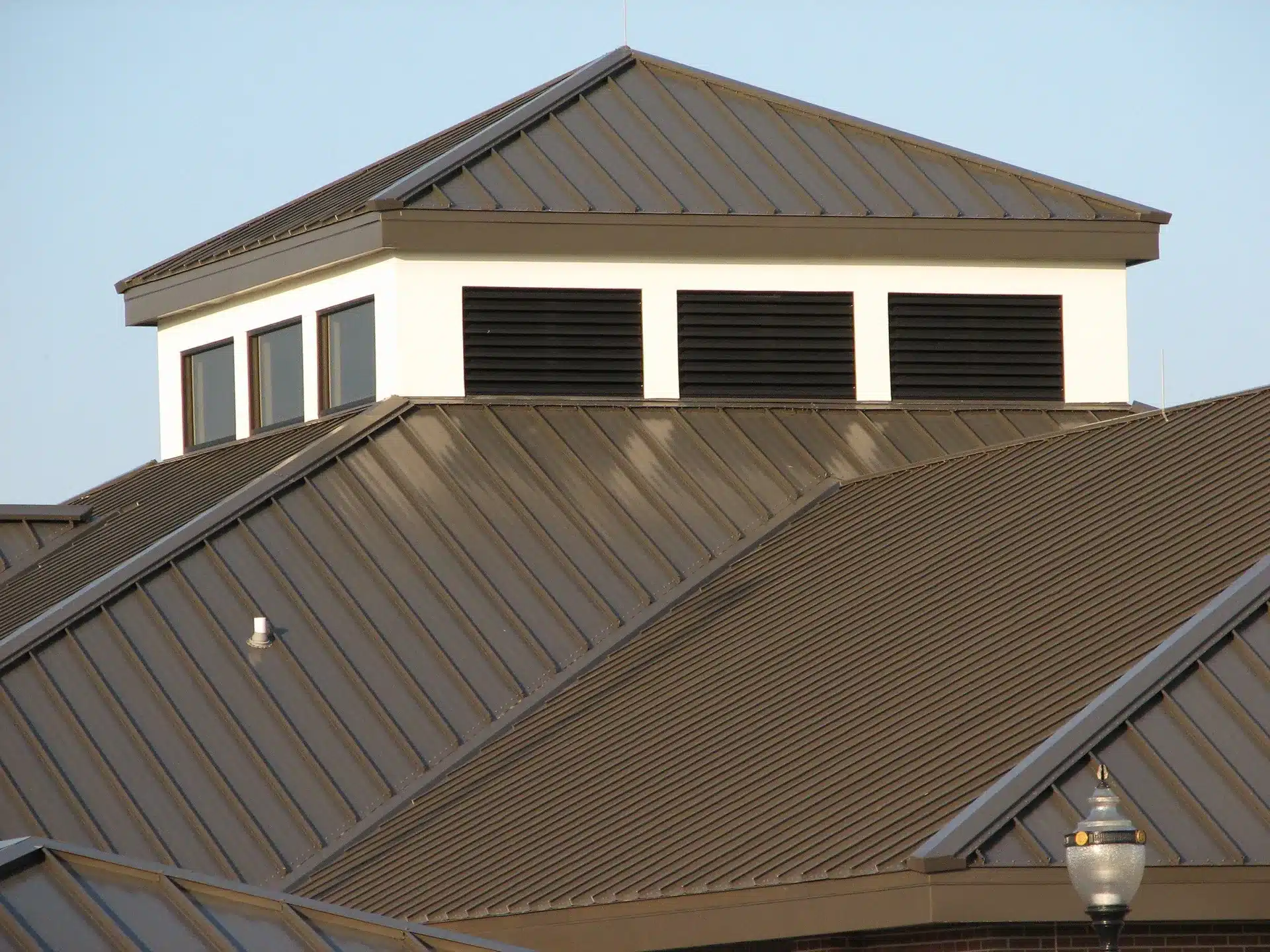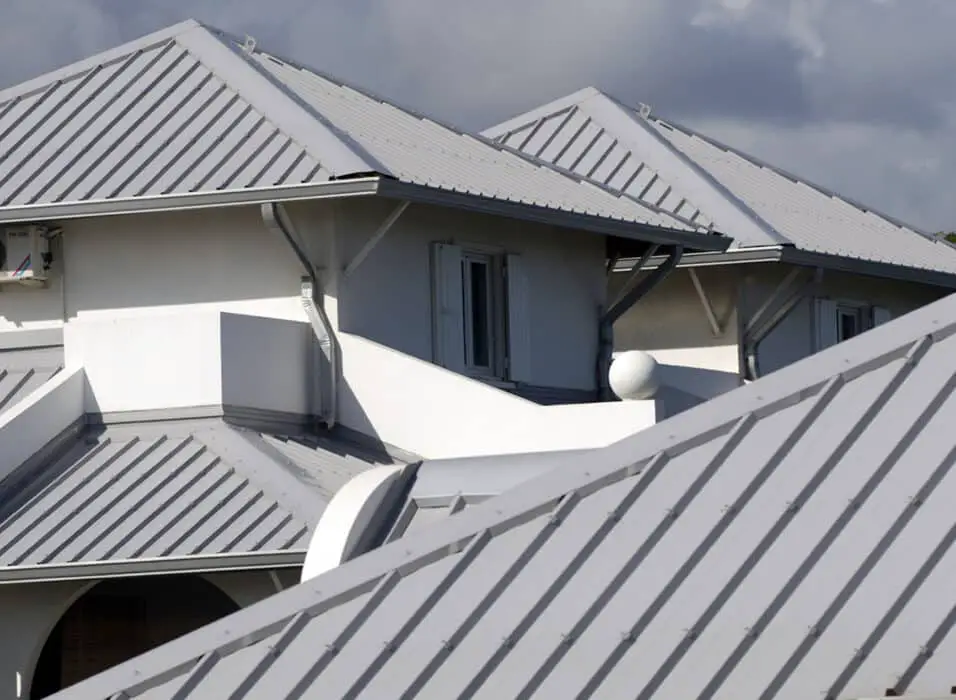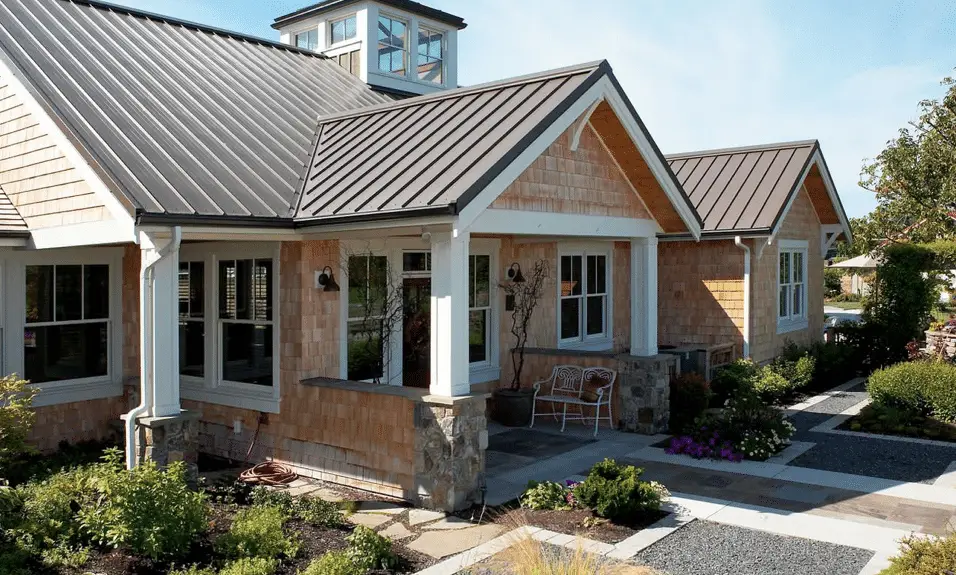How To Install Ridge Cap On Metal Roof
Introduction
How To Install Ridge Cap On Metal Roof: Installing a ridge cap on a metal roof is an essential step in ensuring the durability and longevity of the roof. The ridge cap serves as a protective covering for the ridge, the highest point of the roof where two slopes meet. It not only enhances the aesthetic appeal of the roof but also prevents water, debris, and pests from entering the roof structure.
When it comes to installing a ridge cap on a metal roof, proper technique and attention to detail are crucial. This article will guide you through the step-by-step process of installing a ridge cap on your metal roof, ensuring a secure and professional finish.
The ridge cap is a specially designed metal piece that covers the ridge of the roof. It is typically made from the same material as the roof panels, ensuring a seamless and cohesive appearance. The ridge cap is available in various profiles and sizes to match different types of metal roofs.
Before starting the installation process, it is important to measure the length of the ridge and determine the appropriate size and profile of the ridge cap. This will ensure a proper fit and a visually appealing result.
Before you begin the installation, gather the necessary tools and materials. You will need a tape measure, a chalk line, tin snips, a drill with metal-cutting bits, roofing screws, a screwdriver or drill with a screwdriver bit, and a ladder or scaffolding for accessing the roof safely.
Additionally, ensure that you have the correct type and color of ridge cap that matches your metal roof. It is recommended to use ridge caps specifically designed for metal roofs to ensure compatibility and optimal performance.
By following the proper installation techniques and using the right tools and materials, you can successfully install a ridge cap on your metal roof. This not only adds a finishing touch to your roof but also provides essential protection against the elements, ensuring the longevity and functionality of your metal roof for years to come.
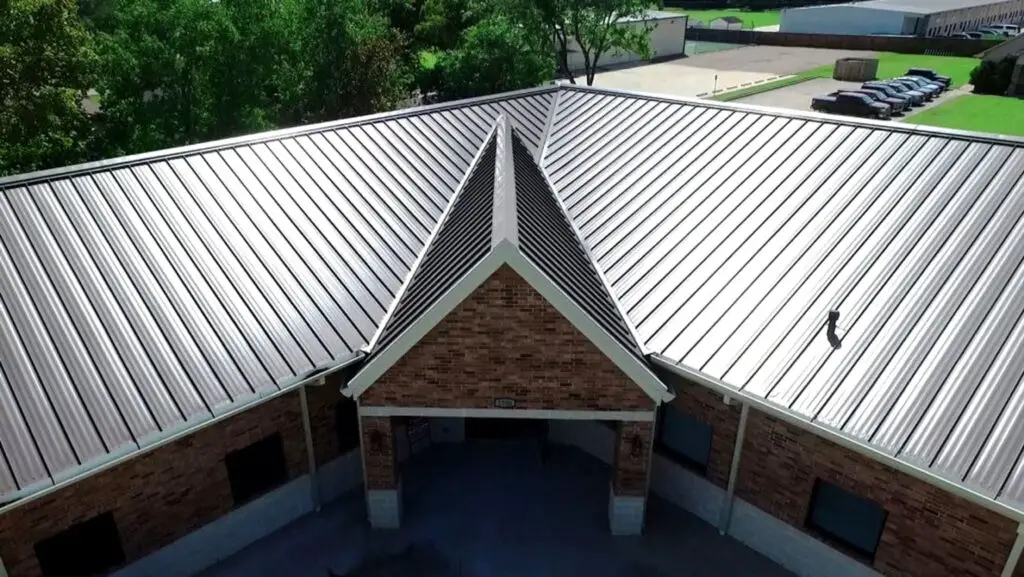
Why install ridge caps?
There are several reasons why ridge caps are essential in a roofing system: Protection: Ridge capping covers the peak of the roof, protecting it from water damage by directing water away from the joint where the two sides of the roof meet. This is especially important in areas with heavy rain or even snowfall.
Introduction:
Ridge caps are an essential component of roofing systems that provide numerous benefits. They are installed at the peak of a roof to cover the gap between two sloping sides, ensuring a watertight seal and enhancing the overall appearance of the roof. In this article, we will explore the reasons why installing ridge caps is crucial for any roofing project.
Importance of Ridge Caps:
Ridge caps play a vital role in protecting the roof from various external elements, such as rain, snow, wind, and debris. By covering the ridge, they prevent water from seeping into the underlying structure, thus preventing potential leaks and water damage. Additionally, ridge caps act as a barrier against pests, preventing them from entering the roof space and causing potential harm.
Enhanced Ventilation:
Another significant advantage of installing ridge caps is the improved ventilation they provide. Ridge caps are designed with ventilation channels that allow hot air to escape from the attic or roof space. This ventilation helps regulate the temperature inside the building, reducing the strain on cooling systems during hot weather. Moreover, proper ventilation prevents the buildup of moisture, which can lead to mold and mildew growth, compromising the structural integrity of the roof.
Aesthetic Appeal:
In addition to their functional benefits, ridge caps also contribute to the overall aesthetic appeal of a roof. They provide a finished look to the roofline, giving it a polished and professional appearance. Ridge caps are available in various materials, colors, and styles, allowing homeowners to choose the option that best complements their architectural design and personal preferences. Whether it’s a traditional or modern roof, ridge caps add a touch of elegance and completeness to the overall look of the structure.
Longevity and Durability:
Ridge caps are typically made from durable materials such as metal, asphalt, or concrete, ensuring their longevity and resistance to harsh weather conditions. They are designed to withstand strong winds, heavy rain, and extreme temperatures, providing long-lasting protection to the roof. By investing in quality ridge caps, homeowners can extend the lifespan of their roofs and avoid costly repairs or replacements in the future.
Ridge caps are an essential component of any roofing system. They offer numerous benefits, including protection against water damage, enhanced ventilation, improved aesthetics, and increased durability. By installing ridge caps, homeowners can ensure the longevity and functionality of their roofs while adding a touch of style to their homes.”
Do metal roofs have ridge caps?
Metal roofing ridge cap is the trim placed along the roof’s ridge – the peak, where two roof slopes meet up. A ridge cap is normally installed only after all metal roof panels and any other trim are in place. In other words, it’s put on last – the cap to the job.
Introduction:
Metal roofs are becoming increasingly popular due to their durability, longevity, and aesthetic appeal. One common question that arises when considering a metal roof is whether or not they have ridge caps. In this article, we will explore the importance of ridge caps for metal roofs and discuss their function in protecting the roof from various elements.
Importance of Ridge Caps:
Ridge caps play a crucial role in the overall performance and longevity of a metal roof. These specially designed components are installed at the peak of the roof, where two opposing roof slopes meet. Their primary function is to provide a protective covering for this vulnerable area, preventing water, debris, and pests from entering the roof structure.
Function of Ridge Caps:
Ridge caps are designed to create a watertight seal along the ridge of the roof, ensuring that water does not penetrate the roof system. They are typically made from the same material as the metal roof itself, ensuring a seamless and cohesive appearance. The ridge caps are installed over the ridge vent, which allows for proper ventilation of the attic space while still maintaining a weatherproof barrier.
Benefits of Ridge Caps:
Having ridge caps on a metal roof offers several benefits. Firstly, they provide an additional layer of protection against water infiltration, which is essential in areas prone to heavy rainfall or snowfall. This helps to prevent leaks and potential damage to the roof structure and interior of the building. Secondly, ridge caps enhance the overall aesthetics of the roof by providing a finished and polished look. They create a smooth transition between the two roof slopes, giving the roof a more visually appealing appearance.
Ridge caps are an integral component of metal roofs. They serve as a protective barrier against water, debris, and pests, ensuring the longevity and performance of the roof. Additionally, ridge caps enhance the overall aesthetics of the roof, providing a finished and polished look. When considering a metal roof, it is crucial to ensure that ridge caps are included in the installation to maximize the benefits and functionality of the roof system.
What is a ridge cap on a roof?
A ridge cap is an essential part of any roofing installation. Ridge capping is a type of roofing material that is used to cover the ridges of a pitched roof (where two roof sides meet). It is typically made of metal or asphalt and is used to protect the roof from water damage and to provide a finished look to the roof.
A ridge cap on a roof is an essential component that plays a crucial role in the overall structure and functionality of a roof. It is a protective covering that is installed along the ridge, which is the highest point where two roof slopes meet. The primary purpose of a ridge cap is to seal the ridge and prevent water, debris, and other elements from entering the roof system.
The ridge cap is typically made of durable materials such as metal, asphalt, or clay tiles, depending on the type of roof. It is designed to withstand harsh weather conditions and provide a watertight seal. The installation of a ridge cap is usually the final step in the roofing process, ensuring that the roof is fully protected and aesthetically pleasing.
One of the main functions of a ridge cap is to enhance the roof’s ventilation system. It allows hot air to escape from the attic or upper part of the roof, preventing moisture buildup and reducing the risk of mold and rot. The ridge cap acts as a vent, allowing air to circulate freely and maintaining a balanced temperature within the roof structure.
In addition to its functional benefits, a ridge cap also adds an aesthetic appeal to the roof. It provides a finished look by covering the exposed edges of the roofing material and creating a smooth transition between the two roof slopes. The ridge cap can be customized to match the color and style of the roof, enhancing the overall appearance of the building.
Overall, a ridge cap is an essential component of a roof that serves both functional and aesthetic purposes. It ensures the integrity of the roof system by sealing the ridge and preventing water infiltration. Additionally, it promotes proper ventilation and adds a polished finish to the roof. Proper installation and maintenance of the ridge cap are crucial to ensure the longevity and performance of the roof.
Is ridge cap necessary?
The ridge cap shingle is a vital piece of all shingle roofs. The ridge line of a roof is the seam of where the asphalt shingles meet, which causes a gap in the singles. This opening is prone to rain and snow meaning it needs added protection.
Introduction:
The question of whether ridge cap is necessary is a common one among homeowners and builders alike. The ridge cap is an essential component of a roofing system, providing protection and aesthetic appeal to the roof’s peak. In this article, we will explore the importance of ridge cap and why it is necessary for a well-functioning and durable roof.
Importance of Ridge Cap:
The ridge cap serves as the finishing touch to a roof, covering the ridge line where two roof slopes meet. It is typically made of the same material as the rest of the roof, ensuring a seamless and cohesive appearance. However, its purpose extends beyond aesthetics.
One of the primary functions of a ridge cap is to protect the roof from water infiltration. The ridge line is particularly vulnerable to leaks as it is the highest point of the roof and often exposed to harsh weather conditions. The ridge cap acts as a barrier, preventing water from seeping into the underlying roofing materials and causing damage to the structure.
In addition to its protective role, the ridge cap also plays a crucial role in maintaining the structural integrity of the roof. It helps to distribute the weight and stress evenly along the ridge line, reducing the risk of sagging or collapsing. Without a ridge cap, the roof’s peak would be left exposed, leaving it susceptible to wind uplift and potential damage during storms.
Types of Ridge Cap:
There are various types of ridge cap available, depending on the roofing material used. For asphalt shingle roofs, ridge cap shingles are commonly used. These shingles are specially designed to fit the ridge line and provide a protective barrier against water and debris. Metal roofs, on the other hand, often utilize ridge cap flashings, which are metal strips that cover the ridge line.
It is important to choose the appropriate ridge cap for your specific roofing material to ensure proper installation and functionality. Consulting with a roofing professional can help you determine the best ridge cap option for your roof.
The ridge cap is indeed necessary for a well-built and durable roof. It provides essential protection against water infiltration and helps maintain the structural integrity of the roof. Additionally, the ridge cap adds a finishing touch to the roof’s appearance, enhancing its overall aesthetic appeal. When installing or replacing a roof, it is crucial to include a ridge cap to ensure the longevity and performance of the roofing system.
What is the length of a ridge cap?
ten feet to twelve feet
Ridge cap is typically ten feet to twelve feet in length and most roofs will be larger than twelve feet.
A ridge cap is an essential component of a roof that plays a crucial role in protecting the roof from water damage and ensuring its longevity. It is a covering that is installed along the ridge of a roof, where two roof slopes meet. The ridge cap acts as a sealant, preventing water, debris, and pests from entering the roof structure. In addition to its functional purpose, a ridge cap also adds aesthetic appeal to the roof, giving it a finished and polished look.
The length of a ridge cap is an important consideration when it comes to installing or replacing one. The length of a ridge cap depends on various factors, including the size and pitch of the roof, the type of roofing material used, and the specific design requirements. Generally, ridge caps are available in standard lengths that can be easily cut and adjusted to fit the dimensions of the roof. However, it is crucial to ensure that the ridge cap extends beyond the roof’s edges to provide adequate coverage and protection.
The length of a ridge cap is typically measured in linear feet or meters. It is important to accurately measure the length of the ridge before purchasing a ridge cap to ensure a proper fit. To measure the length of the ridge, one can use a measuring tape and start from one end of the ridge to the other, following the contour of the roof. It is advisable to add a few extra inches to the measured length to account for any variations or adjustments that may be required during installation.
The length of a ridge cap can also vary depending on the type of roofing material used. For example, if the roof is made of asphalt shingles, the ridge cap length will typically match the width of the shingles used. This ensures a seamless and uniform appearance. On the other hand, if the roof is made of metal, the ridge cap length may be slightly longer to accommodate the expansion and contraction of the metal due to temperature changes.
The length of a ridge cap is an important consideration when it comes to roof installation or replacement. It is crucial to accurately measure the length of the ridge and choose a ridge cap that provides adequate coverage and protection. The length of a ridge cap can vary depending on factors such as the size and pitch of the roof, the type of roofing material used, and specific design requirements. By ensuring the proper length of a ridge cap, one can enhance the functionality and aesthetics of their roof while safeguarding it against potential damage.
A ridge cap plays a crucial role in the overall functionality and durability of a metal roof. It is specifically designed to cover the ridge, which is the highest point where two roof slopes meet. The primary purpose of a ridge cap is to provide protection against water infiltration and prevent any potential damage caused by weather elements such as rain, snow, or wind.
By covering the ridge, the ridge cap acts as a barrier, preventing water from seeping into the roof structure and causing leaks or rot. It also helps to maintain the structural integrity of the roof by preventing the lifting or displacement of roof panels during high winds or storms. Additionally, the ridge cap enhances the aesthetic appeal of the roof by giving it a finished and polished look.
What are the steps involved in installing a ridge cap on a metal roof?
Installing a ridge cap on a metal roof is an essential step to ensure proper sealing and protection against water infiltration. The process involves several steps that need to be followed carefully for a secure and durable installation.
Step 1: Start by measuring and cutting the ridge cap to the appropriate length. It is crucial to ensure accurate measurements to achieve a precise fit. Use a metal cutting tool or a circular saw with a metal-cutting blade to make clean and straight cuts.
Step 2: Once the ridge cap is cut, position it at the ridge of the roof, ensuring it aligns perfectly with the roof’s slope. Use roofing screws or nails to secure the ridge cap in place. It is recommended to use screws specifically designed for metal roofing, as they provide better durability and resistance against weather elements.
Step 3: Apply a generous amount of roofing sealant or adhesive along the edges and underside of the ridge cap. This will create a watertight seal and prevent any water from seeping underneath the cap. Make sure to evenly distribute the sealant to ensure complete coverage.
Step 4: Finally, press the ridge cap firmly onto the roof, ensuring it adheres well to the surface. Use a roller or a mallet to apply pressure and secure the cap in place. This step helps to create a tight bond between the cap and the roof, enhancing its resistance to wind uplift and preventing any potential leaks.
By following these steps and using the appropriate tools and materials, you can achieve a secure and long-lasting installation of a ridge cap on a metal roof.
Are there any specific tools or materials required for installing a ridge cap on a metal roof?
When it comes to installing a ridge cap on a metal roof, there are several specific tools and materials that are essential for a successful installation. These tools and materials ensure that the ridge cap is securely attached and provides a durable and watertight seal.
Tools: Some of the tools required for installing a ridge cap on a metal roof include a tape measure, a chalk line, a metal cutting tool (such as tin snips or a circular saw with a metal-cutting blade), a drill with metal drill bits, a screwdriver or screw gun, and a caulking gun. These tools are necessary for measuring and marking the ridge cap, cutting it to the correct size, drilling holes for fasteners, and securing it in place.
Materials: In addition to the tools, there are specific materials needed for installing a ridge cap on a metal roof. These materials include the ridge cap itself, which is typically made of metal and matches the roofing material, such as steel or aluminum. Other materials include roofing screws or nails, roofing adhesive or sealant, and roofing underlayment or flashing. These materials are crucial for attaching the ridge cap securely to the roof, sealing any gaps or joints, and providing additional protection against water infiltration.
Are there any safety precautions to consider when installing a ridge cap on a metal roof?
When installing a ridge cap on a metal roof, it is crucial to prioritize safety to prevent accidents and ensure a successful installation. Here are some important safety precautions to consider:
Personal Protective Equipment (PPE): Before starting the installation process, it is essential to wear the appropriate PPE. This includes safety glasses, gloves, and a hard hat to protect against potential hazards such as falling debris or accidental slips.
Secure Footing: Ensure that you have a stable and secure footing while working on the roof. Use a sturdy ladder that is properly positioned and secured. It is also advisable to use a safety harness or fall protection system to prevent falls from heights.
Weather Conditions: Check the weather forecast before starting the installation. Avoid working on the roof during adverse weather conditions such as strong winds, rain, or snow, as these can increase the risk of accidents and compromise the quality of the installation.
Proper Tools and Equipment: Use the right tools and equipment for the job. Ensure that all tools are in good working condition and appropriate for the specific task. This includes using the correct fasteners, sealants, and ridge cap materials recommended by the manufacturer.
Teamwork: If possible, have a partner or colleague assist you during the installation process. Having an extra set of hands can help with lifting and positioning the ridge cap, reducing the risk of strain or injury.
By following these safety precautions, you can minimize the risk of accidents and ensure a safe and successful installation of a ridge cap on a metal roof.
Are there any safety precautions to consider when installing a ridge cap on a metal roof?
When it comes to installing a ridge cap on a metal roof, safety should always be a top priority. Working at heights can be dangerous, so taking necessary precautions is crucial to prevent accidents and injuries. Here are some important safety measures to consider:
Proper safety equipment: Before starting the installation process, ensure that you have the necessary safety equipment. This includes a sturdy ladder, safety harness, non-slip shoes, and a hard hat. These items will provide stability and protection while working on the roof.
Secure footing: Make sure the roof surface is dry, clean, and free from any debris or loose materials. This will help maintain a secure footing and reduce the risk of slipping or tripping. Additionally, consider using roof brackets or toe boards to create a stable working platform.
Weather conditions: Check the weather forecast before starting the installation. Avoid working on the roof during windy or rainy conditions, as it can make the surface slippery and increase the risk of accidents. If adverse weather conditions arise during the installation process, it is important to stop and resume work when conditions improve.
Use caution with tools: When using tools such as hammers, drills, or power saws, always exercise caution and follow the manufacturer’s instructions. Keep your hands and fingers away from the cutting or striking area to prevent injuries. Additionally, ensure that all tools are in good working condition and properly maintained.
Teamwork and communication: If possible, have a partner or colleague assist you during the installation process. This can provide an extra set of eyes for safety and help in case of an emergency. Maintain clear communication throughout the project to ensure everyone is aware of their roles and any potential hazards.
By following these safety precautions, you can minimize the risks associated with installing a ridge cap on a metal roof and ensure a safe working environment for yourself and others involved in the project.
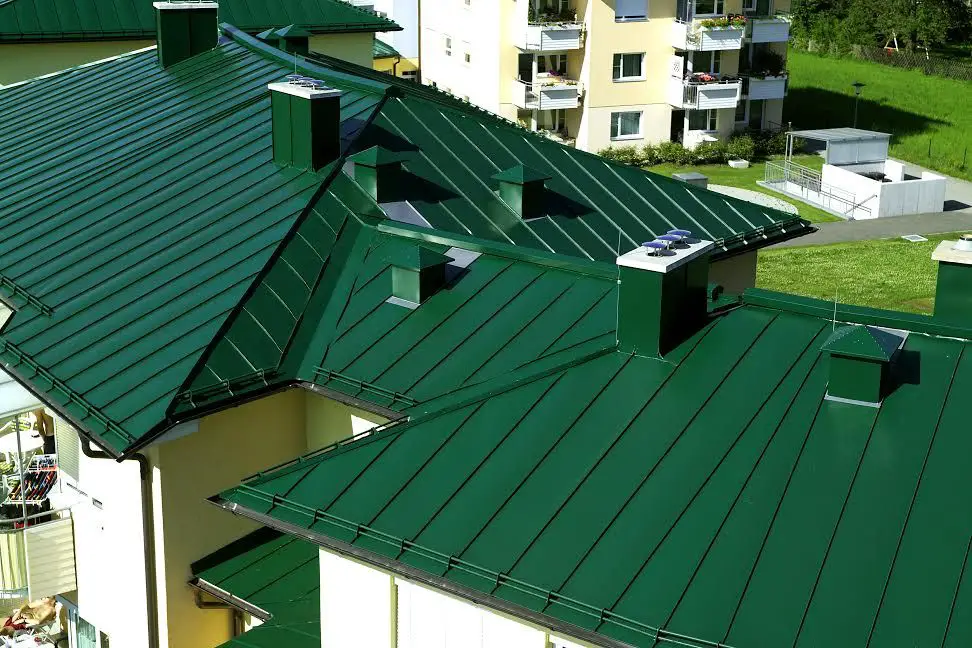
Conclusion
Installing ridge cap on a metal roof is a crucial step in ensuring the durability and longevity of the roof. By following the proper instructions and techniques, you can achieve a professional and secure installation. This conclusion will summarize the key points discussed in this article and provide a final overview of the process.
The first step in installing ridge cap on a metal roof is to gather all the necessary tools and materials. This includes ridge cap pieces, roofing screws, a drill, a screwdriver, and safety equipment such as gloves and goggles. Once you have everything ready, you can proceed to the next step.
The second step is to prepare the roof surface by cleaning it thoroughly and removing any debris or dirt. This ensures a clean and smooth surface for the ridge cap installation. Additionally, it is important to measure and mark the centerline of the roof ridge to ensure accurate placement of the ridge cap.
Next, you will need to apply a generous amount of roofing sealant along the centerline of the roof ridge. This sealant acts as an extra layer of protection against water infiltration and helps to secure the ridge cap in place. Once the sealant is applied, carefully position the ridge cap over the centerline and press it firmly onto the roof surface.
Finally, secure the ridge cap in place by using roofing screws. These screws should be placed at regular intervals along the ridge cap, ensuring that it is securely fastened to the roof. It is important to avoid over-tightening the screws, as this can damage the ridge cap or the roof itself.
Installing ridge cap on a metal roof requires careful preparation, accurate measurements, and proper sealing and fastening techniques. By following these instructions, you can ensure a professional and secure installation that will protect your roof from the elements and extend its lifespan. Remember to always prioritize safety and consult professional help if needed. With the right tools and techniques, you can successfully install ridge cap on your metal roof and enjoy its benefits for years to come.



